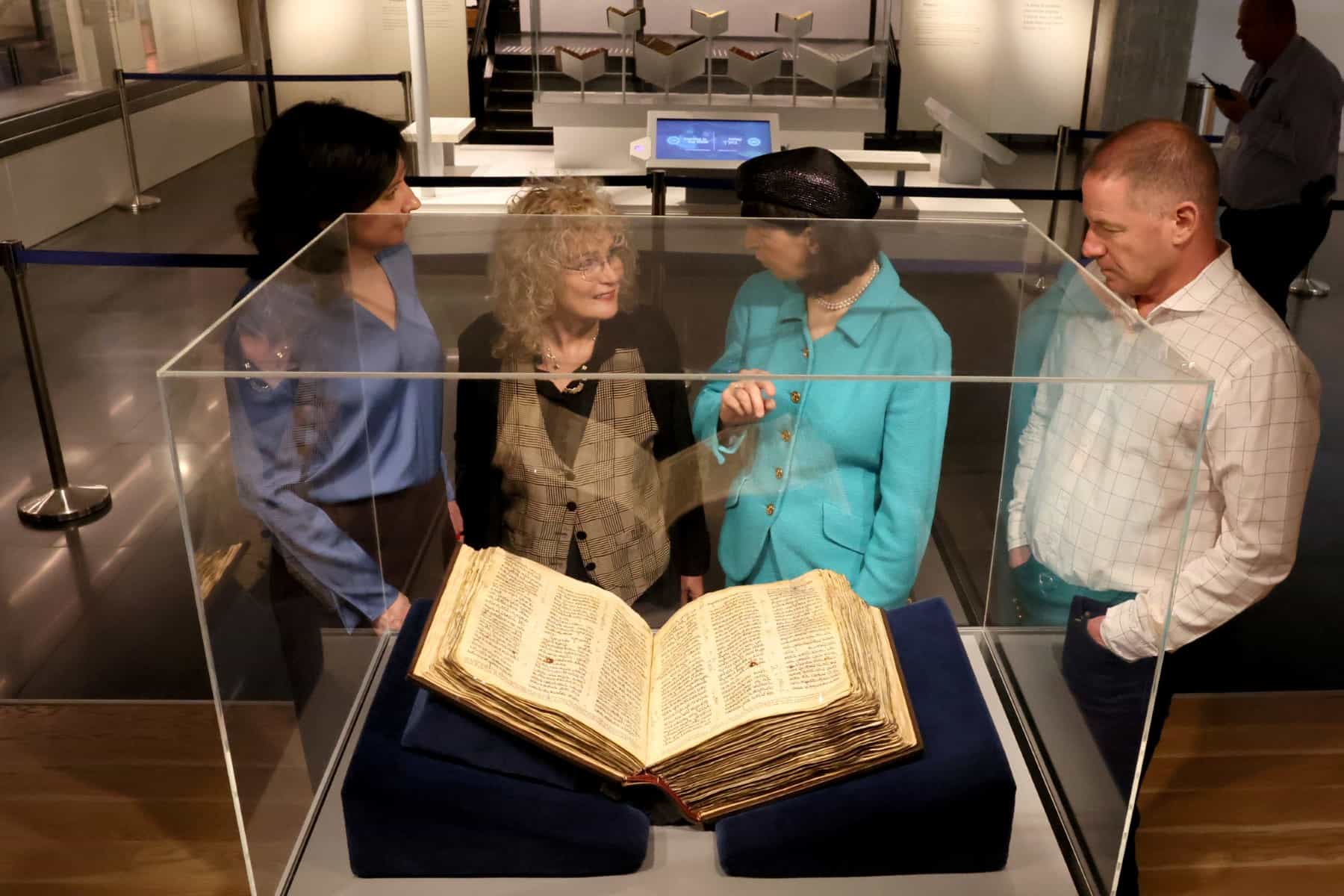Tel Aviv, Israel — The oldest known near-complete Hebrew Bible was presented to the press on Wednesday in Tel Aviv, where it will be displayed for a week before going under the hammer in New York.
The Codex Sassoon is one of only two codices, or manuscripts, containing all 24 books of the Hebrew Bible — the Christian Old Testament — to have survived into the modern era and is estimated to be 1,100 years old.
Sharon Mintz, a specialist in Jewish texts at Sotheby’s, the auction house selling the codex in May, said carbon dating and other forms of analysis showed the Codex Sassoon “was written around the year 900, either in the land of Israel or Syria”.
A deed shows the book was sold in 1000 AD, and the codex was then held in a synagogue in what is now northeastern Syria until around 1400, she said.
“The manuscript then disappears for about 500 years, and re-emerges in 1929 when it was offered for sale to David Solomon Sassoon, one of the greatest collectors of Hebrew manuscripts.”
The manuscript bridges the Dead Sea Scrolls — which date back as early as the third century BC — and today’s standard texts of the Hebrew Bible, which are based on the work of Greek translators or early mediaeval Jewish scribes.
“What you see here is an accurate, stabilized standard text of the Hebrew Bible, written over 1,000 years ago, as accurate as it is today,” Mintz said.
“It presents to us the first time an almost-complete book of the Hebrew Bible appears with the vowel points, the cantillation and the notes on the bottom telling scribes how the correct text should be written.”
According to Sotheby’s, the Codex Sassoon is significantly more complete than the Aleppo Codex, dated to the same era.
‘Moving’ –
The Codex Sassoon bears a cultural significance beyond its linguistic and historic value, said Orit Shaham Gover, curator of the ANU Museum of the Jewish People.
“The Bible plays a central role for any person with even a fleeting connection to Western culture, and this is the first Bible that survived history,” she said.
To her, its display at her institution was “rare and moving”, since it is only the second time in modern history that the codex will be on public display — and the first in Israel.
“The Bible wandered in all kinds of places throughout history, and was displayed only once to the public in 1982 at the British Library, and since then was always in private hands,” she said.
The curator said ANU expected to draw the museum’s full capacity of 10,000 visitors for the week.
“The Bible is the foundation of Jewish culture,” she said.
“As an Israeli and a Jew, I think it’s very important that the people of Israel will get to see this highly important Bible, and I’m proud we’re the ones chosen to display it.
“As a Bible, in the book format we use, with the structure and story we know — everyone has a copy on their bookshelf at home — this is the oldest iteration of it existing, 1,100 years old.”
Sotheby’s pre-sale estimates put the manuscript’s value at between $30 million and $50 million.








